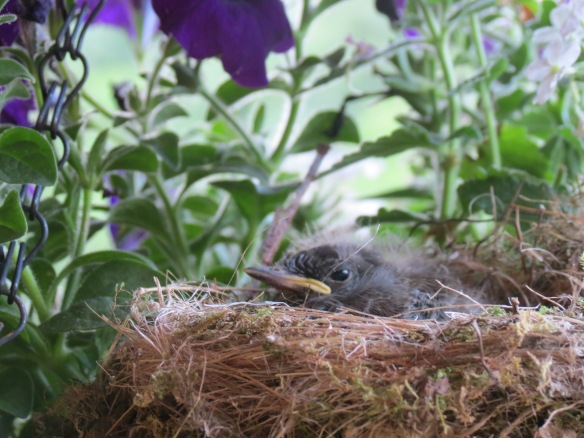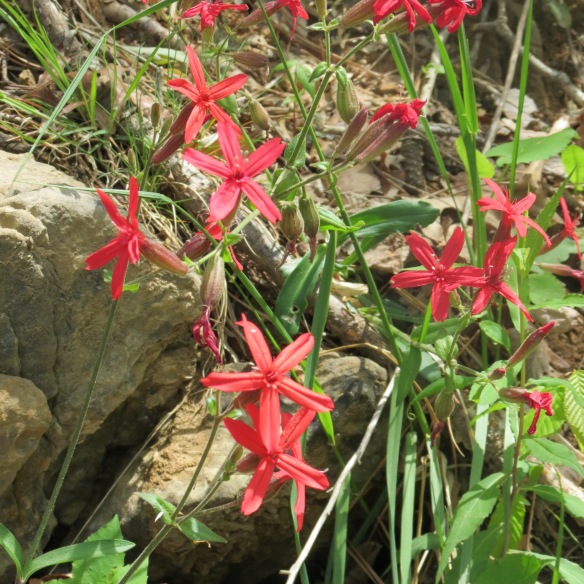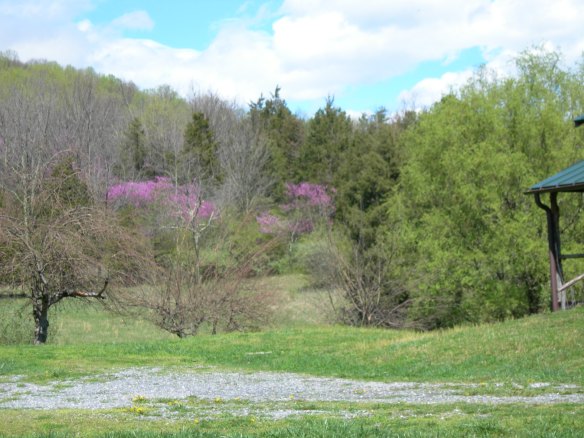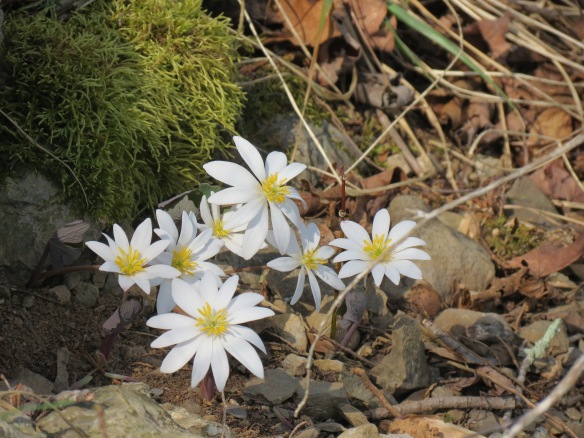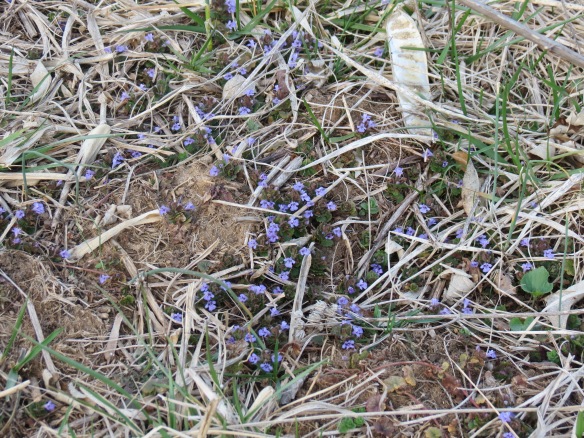We only have one kingfisher here in western Virginia, the Belted Kingfisher. They are year-round residents in the Commonwealth as long as the waterways stay open in winter and they can find the small fish that make up the bulk of their diet. We’ve had a few kingfisher sightings, but one a couple of years ago was quite memorable.
My husband and I were driving into town when we approached an intersection where we saw a Belted Kingfisher sitting on a utility wire. We pulled over to watch, hoping to see him dive for a fish, and that’s when all hell broke loose. Kingfishers have their own very strict fishing “regulations,” and evidently, we had interrupted his fishing expedition. He began indignantly patrolling back and forth overhead, scolding us with a non-stop barrage of harsh rattle-calls that kept up until we left. Because of that incident, we dubbed the intersection “Kingfisher Corner.”
After that encounter, we didn’t see another kingfisher until I saw this female in the willow tree at our neighbor’s pond a few days ago.

The male has a blue band across the chest; the female has an additional rufous band.

Note the small white spot by each eye at the base of the bill.
When I first spotted her, I quickly took a couple of pictures, thinking I might not get another shot with this flighty bird. Sure enough, no sooner had I snapped the pictures when off she flew. She made a large circle, flying over the top of the woods behind me, then came back around to my right, landing in a tall tree about 50 yards away. I kept trying to get closer, but, true to form, she flew every time I got anywhere near close. Typical of other encounters, she kept up the mechanical rattle-call to let me know I was not welcome in her fishing territory.
Kingfishers are one of the wariest birds on the planet. In his Waterbirds of the Northeast, Winston Williams sums up the wariness of the kingfishers: “If eternal vigilance is the price of liberty, the kingfisher will remain ever free.” A bird more leery of humans would be hard to find; their penchant for secrecy and distrust of people rivals that of any bird.
These raggedy-crested birds are in a class all their own. They dig a burrow into earthen banks to raise their young, more like a badger or muskrat than a bird, and they defend their nest as vigorously as any bird I know. It’s fascinating to watch them dive underwater to spear a fish. Darting from a perch, the fisherbird hovers over the water for a split second to pin-point his quarry then dives headlong into the water. A special third eyelid closes to protect the bird’s eyes while underwater.
Because they require clean water for their diet of fish, kingfishers are an indicator species of water quality. The fact that they are living and breeding in our area means that our creeks are clean and uncontaminated.
If the female I saw was laying “claim” to the fish, crayfish, and salamanders in our neighbor’s pond, she’ll be back. And I’ll be watching…from a distance.
37.784021
-79.442816





